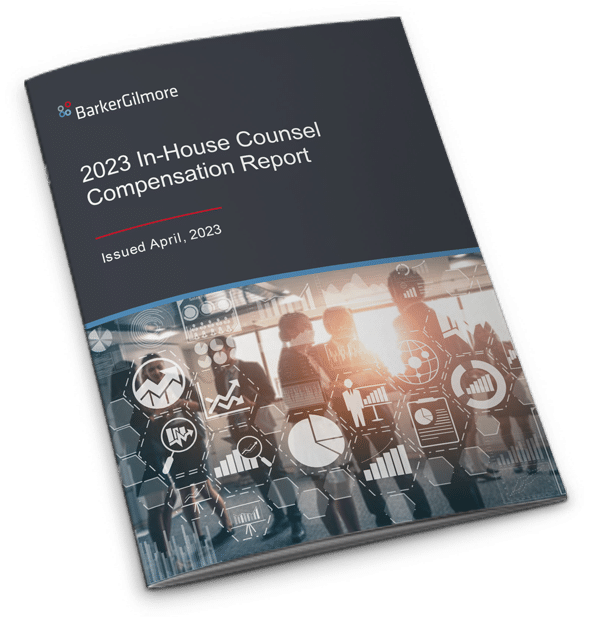Senior Advisors Helen Pudlin, Maureen Brundage, and Noah Hanft share their experience and advice on how to reframe a “no” message into options and recommendations to mitigate legal risk while adding value as a problem solver and trusted counselor.
Below are highlights from the webinar. To learn more, the video recording, slide presentation, and podcast are available on this page.
Be attuned to communicating in troubled times.
“As you are all very much aware, we’re in a period of unprecedented upheaval and we’re dealing with the constraints and uncertainties of social distancing and remote learning and working. These times make communication with CEOs and other business leaders all the more challenging. Today it’s more important than ever to be an effective communicator, risk manager, and business partner.”
— Helen Pudlin
Learn to navigate “no” and provide alternatives.
“My mind was always that the role of GC was to try to help the business get to “yes” — thinking outside the box to come up with possible alternatives to reduce the risk really was critical.”
— Maureen Brundage
CEOs and other business leaders want their General Counsel and inside lawyers to be problem solvers. They don’t want them to be obstacles to accomplishing business objectives. However, inside lawyers are sometimes criticized for too often saying that a proposed business action can’t be done because it violates the law or creates too much legal risk. To avoid being criticized, there are clear-cut steps you can take:
- Do your homework — you and your team need to gather all of the facts and understand the business objectives and the business perspective, as well as the legal issues.
- Assess the risk appetite —know and remind the CEO about the company’s risk appetite; one size does not fit all and varies in public versus private companies.
- Understand the culture — this is vital at both the management level and the board level.
- Maintain a good relationship with the business — a relationship that’s based on trust and respect is essential.
- Communicate clearly and concisely — use terms your business colleagues will understand and avoid legal jargon and citing case law.
“As General Counsel, I took a lot of pride in my lawyers being recognized as creative business contributors, but we also discussed many times that there’s a way to offer an opinion … Certainly, being recognized as a creative business contributor is important, but so is your style of communication. I coached my attorneys to avoid being directive when offering an opinion. For example, I advised them not to say, “here’s how you should do it,” but instead “let me suggest another approach for your consideration.” This technique makes it clear that you are not the decision maker; you are presenting your perspective.”
— Noah Hanft
Get heard by business leaders who don’t want to give you adequate time for a presentation on legal risks, options, or recommendations.
If you think there are significant legal risks that the CEO or other business leaders need to be aware of, here are some tips for effectively being heard.
- Be persistent and adapt to the personality of your CEO, a leader who deals with information at warp speed.
- Knowing your audience is as critical as your communication style.
- Get on the CEO’s calendar by working with their assistant, but only when it’s really important so that you maintain the CEO’s respect.
- Prepare a “cheat” sheet with bullets for what you want to convey and quickly get to the point.
- Be prepared with details and have them available in case you are asked for more information. This holds true both in oral communications as well as written communications. For example, in an email, put the details in an attachment or offer to send more details in a separate email.
Consider what you put in writing regarding the legal risks of proposed actions and the alternatives to mitigate risks.
Views vary on this issue with some General Counsel believing that serious risks should always be raised in writing and others having precisely the opposite opinion. Consider the following:
- Delineate between circumstances in which a memo is requested and those where it’s not.
- When a memo is requested, in most instances it’s appropriate to issue one.
- Some CEOs like to see an analysis of risks, options, and recommendations in writing, so if there is a concern about privilege or other reasons, explain that an oral presentation and discussion would be advantageous.
- Where there is concern about written information potentially “leaking” and opening you up to either litigation or a regulatory proceeding, then a written document should be avoided.
- It gets a little trickier if you want to put something in writing when it’s not requested or expected, there are limited instances where it makes sense to do so depending again on the circumstances.
- It would be rare to send a CEO a risk memo that they didn’t request as it might seem self-serving.
“In a few instances, if a cogent memo on an important, complicated issue calls for a discussion not only of risks, but an analysis of options and recommendations, then writing could be appropriate..”
— Noah Hanft
- Many legal issues are gray and have varying degrees of risk and most business leaders don’t want to read through a nuanced written presentation on risks and alternatives.
- The hardest problems often come up at the time of crisis where there may not be sufficient time to prepare a thoughtful memo.
The goal is to turn a “no” into a “yes,” but is it ever appropriate just to say “no”?
There are clearly times when “no” is the only answer. When what’s proposed is illegal – such as paying a bribe which is an FCPA violation, committing fraud like fixing the numbers to make guidance, or not abiding by U.S. economic sanctions laws and regulations – “no” is not negotiable. Interestingly, when you say “no” you often won’t get pushback because it’s almost as if your business colleagues are testing you. They knew the answer would be “no,” but they wanted to see if you were paying attention.
“If you do get pushback, it’s helpful to point out what has happened to other companies in similar situations. The adage, “never let a good crisis go to waste,” definitely is true.”
— Maureen Brundage
Sharing information about other companies getting into trouble or about legal proceedings and the consequences, whether it’s fines or reputational damage, often resonates with business leaders. Reminding others about your company’s code of business conduct is also helpful. If these efforts fail, you can escalate the issue to the CEO and the Board.
Forge alliances with leaders of other risk and staff functions to support you.
This is generally a good practice, and it may be especially helpful at times when a business leader or a CEO doesn’t fully appreciate or accept the risk, options, or recommendations that you are presenting to them.
- Other risk and business leaders often will help you craft alternatives to mitigate risk that are reasonable alternatives to help you persuade the CEO.
- Sometimes you have to make the decision about elevating your risk if the business leader is not getting it.
- For the GC who sits on an executive committee or another applicable committee, it could provide another forum to raise your legal concerns.
- It’s always best to resolve your concerns before getting to a committee.
- If you’re going to raise your concerns at a group meeting and the CEO is resisting your advice, tell them before the meeting that you will be doing so.
- Before the meeting, line up allies on the committee to support your concerns.
“It is usually better to deal with the decision maker one on one before the meeting or even after the meeting so they don’t feel embarrassed or challenged or dig in at a group meeting, and you don’t get into group-think on just siding with the business leader and not being able to get your business point through.”
— Helen Pudlin
Helen Pudlin, Maureen Brundage, Noah Hanft, and our team of professionals are happy to help accelerate the initiatives that you’re already pursuing or to supplement your current strategic thinking to help you realize your vision. Please reach out if you or your organization may benefit from our recruiting, coaching, or advising services.
Connect with a legal recruiting advisor
* indicates required fields




